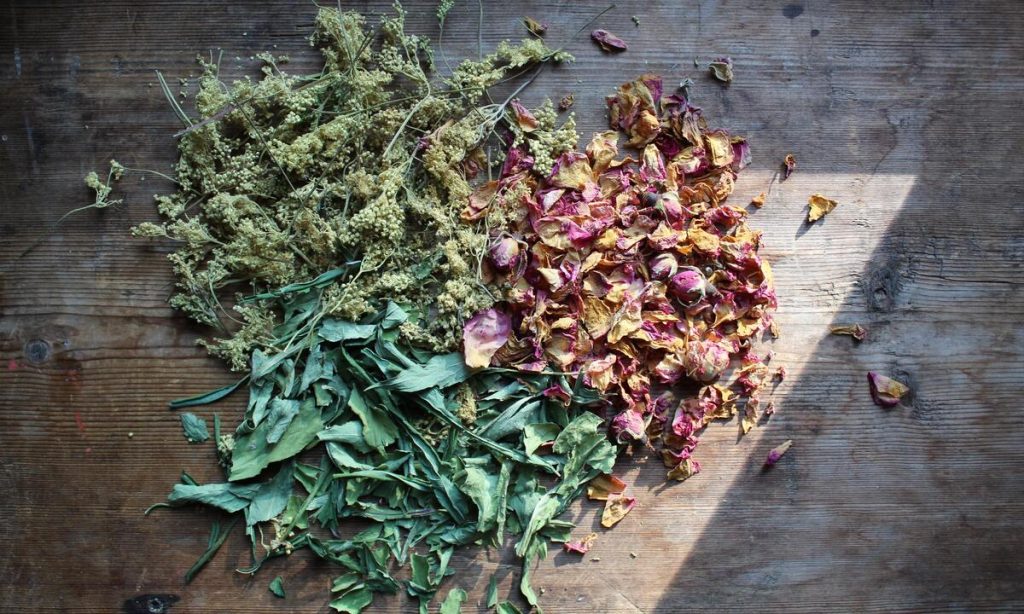Herbs are easy to grow, and drying them yourself can save you loads of money in the spice aisle. Never buy bottled herbs again with these tips on how to dry them at home.
Preparation
Herbs that you want to dry should be picked before flowers develop. The damaged leaves should be removed and the herbs should be thoroughly washed before being dried.
Herbs such as sage and mint have large leaves and should generally be removed from their stalks, whereas small and delicate herbs like thyme and fennel can be left on the stalks until they have been dried.
Every herb has their own moisture level and as such you should try not to mix herbs together as they will dry at different rates. Certain herbs like rosemary, mint, sage and thyme lend themselves well to air-drying, so are great for beginners to try.
Drying Methods
Traditional
The oldest and most basic way to dry herbs is to air dry them. This is done by hanging bunches of herbs upside down in a cool, dry place and essentially allowing time to do the work for you. Once all the moisture has disappeared from your herbs you then crumble the dried leaves into a jar or another airtight container to preserve them.
For herbs that have been removed from the stems, you can lay the leaves out on a tray to dry. In this instance, make sure that the area is free of dust and that the herbs are not in a place where they are likely to get blown away.
How do you know when the herbs are ready? After a couple of days, simply take a leaf and crush it between your fingers. If it sounds crunchy and falls apart easily then the herbs are ready to be stored.
Dehydrating
Another good way to dry herbs at home is with a dehydrator. While we know that a dehydrator is not a common at-home appliance, many people might own one for uses such as making dried fruit, incubating yoghurt or making homemade biltong. To dry herbs in a dehydrator, place the leaves in a single layer on each tray and cook on low for two to four hours (depending on the herb).
Microwave
Did you know that you can use your microwave to dry small amounts of herbs? To do so, spread the leaves in a single layer between two sheets of paper towel and place them onto a plate. Microwave on high for one minute (watching closely to ensure that they don’t burn!), then heat at 30-second intervals until the herbs have dried out.
Oven
If you don’t have the patience for air-drying but do not want to use a microwave or dehydrator, then the oven will also do the job. Set the oven to the lowest setting and spread the herbs onto a baking tray in a single layer. It is recommended to lay the leaves onto cheesecloth or muslin so that they don’t stick to the tray, but a silicon mat would also work just fine. Place the tray into the oven for about 30 minutes, leaving the door ajar to allow moisture to escape. If the leaves are not dry after 30 minutes then turn them over and place back into the oven – checking regularly so make sure they don’t burn!
Dried herbs can be used to add flavour to any recipe, and are especially useful in the winter months when fresh herbs are not as readily available. Just keep in mind that drying concentrates the flavour in herbs, so you don’t need to use nearly as much as when you cook with fresh herbs.
Enjoyed this article ? Tag us @foodandhomesa #cookingwithFH on Instagram!
SEE MORE: 3 inventive ways with herbs
Guide to growing your own herbs and vegetables
Cook’s garden: A month-by-month guide to growing your own herbs and vegetables
Featured image : Anne Nygård on Unsplash

